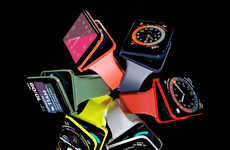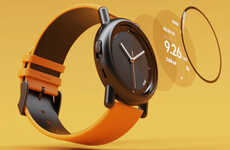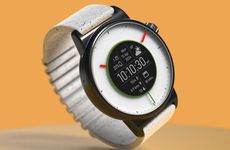
Samsung's Smartwatch Displays the Timeface Onto the Wearer's Skin
Samsung's latest design for a digital timepiece features a projecting smartwatch screen that creatively displays the face onto the wearer's skin. The design utilizes the consumers body as part of the gadget, allowing consumers to use the device by punching numbers and commands directly onto their skin.
The newly engineered smartwatch makes use of a head-mounted display that is able to project the screen onto surrounding surfaces such as the wearer's skin. The screen can showcase what is displayed on the watch or connect to laptops and smartphones to do the same. Users can receive and interact with notifications, texts, emailing, calls and more directly by touching the virtual screen displayed on the hand rather than the watch itself. The innovative design expands the surface of the screen to provide a bigger display.
The newly engineered smartwatch makes use of a head-mounted display that is able to project the screen onto surrounding surfaces such as the wearer's skin. The screen can showcase what is displayed on the watch or connect to laptops and smartphones to do the same. Users can receive and interact with notifications, texts, emailing, calls and more directly by touching the virtual screen displayed on the hand rather than the watch itself. The innovative design expands the surface of the screen to provide a bigger display.
Trend Themes
1. Skin-projected Displays - Exploit the potential of projecting data onto the consumer's body for personalized and efficient interaction.
2. Virtual Skin Interfaces - Explore the development of touch interfaces on the skin as the next step in wearable technology.
3. Bigger Screen Surfaces - Innovate in increasing screen size and real estate by expanding the surface area of displays beyond the device.
Industry Implications
1. Wearable Technology - Smartwatch designers can incorporate skin-projection technology innovation into their products to boost user experience and further distinguish their brand.
2. Sensory Devices - Employ skin-projecting technologies in devices such as hearing aids, prosthetic limbs or virtual reality headsets to augment user interaction and immersion.
3. Gaming - Invest in the development of skin-projecting technologies to expand the scope of user interfaces in gaming and create a more immersive experience.
4.1
Score
Popularity
Activity
Freshness























